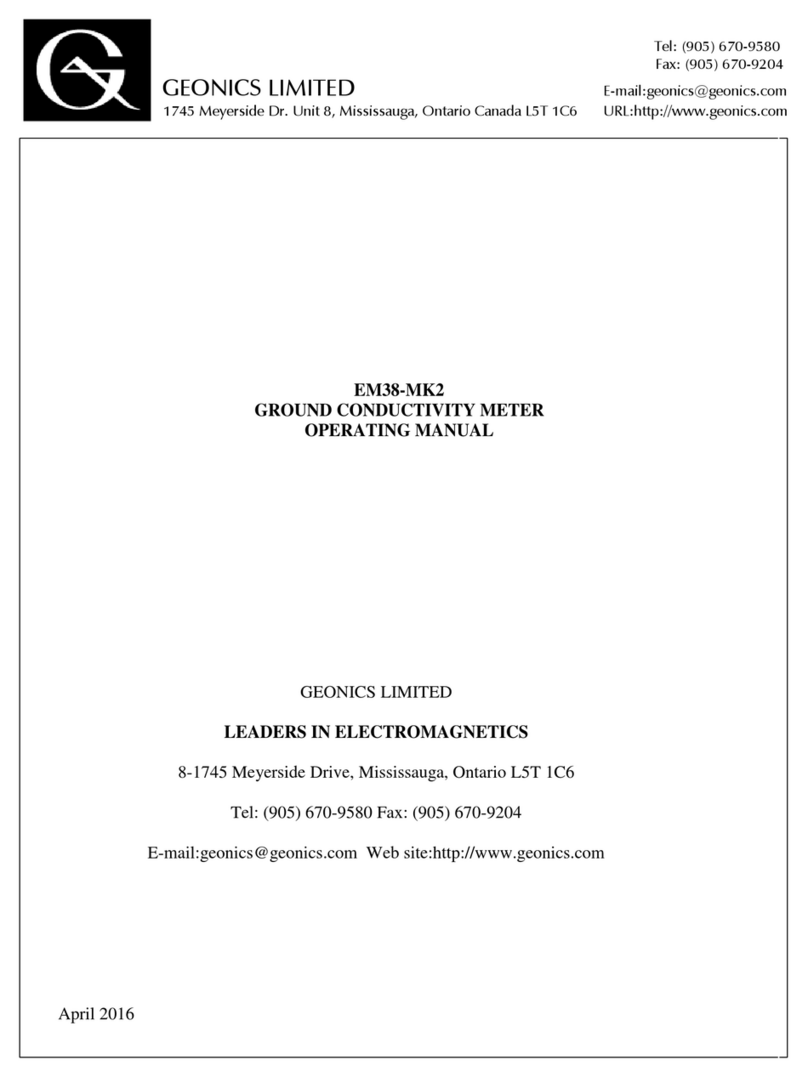
EM31-SH MANUAL Page 1
1.0 INTRODUCTION
Measurement of ground resistivity is one of the oldest
geophysical techniques. Table 1, taken directly from
Heiland*, lists typical values of resistivity for a variety
of geological materials (pages 4-8). The values given are in
ohm-centimeters and must be divided by one hundred to give
ohm-meters.
It will be observed that in most cases the actual resistivity
itself is not diagnostic and a knowledge of the way in which
the resistivity varies laterally and with depth is of great
importance, since this permits us to “see” features as a
result of their shape rather than their actual resistivity
values. There is thus a requirement for instrumentation which
permits the rapid and accurate measurement of terrain
resisitivity. Since the EM31 does not require electrical
contact with the ground it fulfils this objective.
The basic principle of operation of EM31 is simple. With
reference to Figure 1 a transmitter coil located at one end
of the instrument induces circular eddy current loops in the
earth. Under certain conditions fulfilled in the design of
the EM31 the magnitude of any one of these current loops is
directly proportional to the terrain conductivity in the
vicinity of that loop. Each one of the current loops
generates a magnetic field which is proportional to the value
of the current flowing within that loop. A part of the
magnetic field from each loop is intercepted by the receiver
coil and results in an output voltage which is therefore also
linearly related to the terrain conductivity.
* Heiland, C.A. Geophysical Exploration. Hafner Publishing Co., New York 1968




























